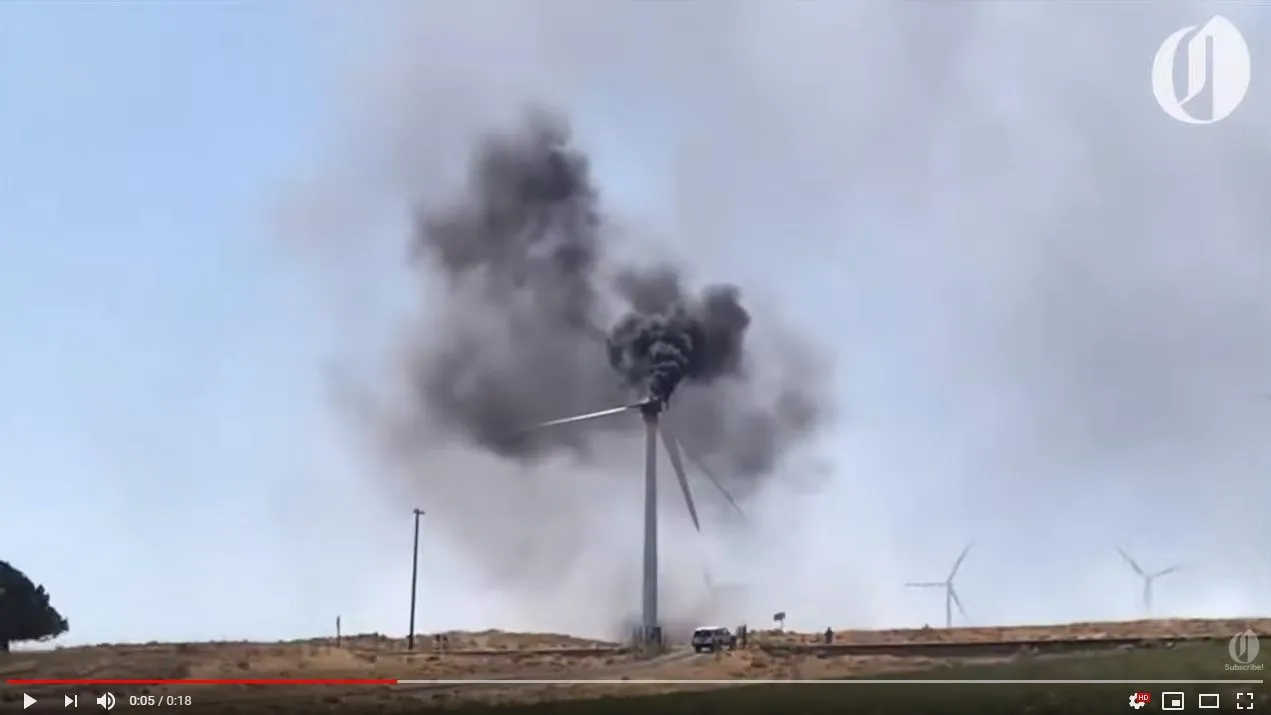Table of Contents
To borrow an ancient saying, beware of greens bearing gifts. For many farmers and rural communities, a wind farm developer rolling into town no doubt seems a great opportunity to get in on the trillions thrown at the Climate Cult.
Until, as green schemes are wont to do, it all goes tits-up.
Regional businesses have been left millions of dollars out of pocket after a sub-contractor building NSW’s largest wind farm went bust.
The outraged creditors say they have concerns developers of major renewables projects are not conducting due diligence.
Gosh, do ya think? I mean, with the government splashing an astonishing $1 billion per year on wind farm subsidies, should anyone be surprised that cowboys and grifters are swarming to the taxpayer-funded honey-pot? Each turbine represents half a million in government subsidies alone.
And they’re surprised that scammers are taking the money and running?
When the wind farm begins operations early next year, it will be the biggest in the state, with 66 wind turbines, each 200 metres tall.
Tilt Renewables’ promotional materials claim it will generate enough electricity to power 215,000 homes and offset 960,000 tons of carbon emissions each year, the equivalent of removing 300,000 cars from the road.
Such claims are almost always based on “installed capacity”: that is, the amount of electricity it could theoretically produce if every turbine was working at maximum capacity at the same time. Which, of course, they almost never do. In fact, on average, wind farms only produce about 25% of their installed capacity in a year.
As for being money spinners for regional communities.
The company also boasts the project will create 250 jobs during construction and bring “significant local and regional economic… benefits.”
A boast about as truthful as its electricity generation claims.
But it’s also brought severe financial stress upon a trail of small and medium businesses – some left on the brink of collapse – after a sub-contractor, Green Civil Con, was placed into liquidation in February, owing unsecured creditors $21 million.
Haines Brothers general manager Adam Dobb said the $408,000 the Picton-based earthmoving company was owed had had a massive impact on the business.
“It’s been difficult for a long list of creditors on that list and will continue to [be] because now they’ve got to go and perform additional works to repay those losses through this process,” Mr Dobb said […]
Bald Hill Quarry, a company that supplies quarry materials based in Jugiong in the NSW Hilltops Region, is owed $1.4 million.
Another business owner, who did not want to be named, was left with a debt of $226,000 – an amount he told Sky News Australia almost crippled his company and forced him to move back in with his parents.
Divall’s Earthmoving and Bulk Haulage were left with a $116,000 debt and are leading the group of unsecured creditors trying to recoup the losses from Tilt Renewables and its principal contractor Zenviron, which hired Green Civil Con.
That last name is at last some truth in advertising. Just drop the “Civil” and you’ve nailed the whole issue.
But it’s “Con” all the way down, where the renewables scam is concerned.
The former director of Green Civil Con, Tiernan Quinn, denied [trading while insolvent], claiming the company “did not trade while insolvent, but we were under pressure” […]
He blamed alleged fraud by another company on a prior project, extreme weather, the pandemic and rising costs such as fuel for the company’s collapse, as well as the inflexibility of Tilt Renewables and Zenviron.
Sky News
Even when wind farms are actually finished and (occasionally) working, the scamming doesn’t end. Officially, the government pays developers $500,000 per windmill, but there are claims the subsidies can reach $600-900,000 per turbine. A turbine costs around $2-4m to manufacture, and $42-48,000 pa to maintain.
So, over the 20-year average lifespan of a turbine, the developer faces roughly $2.5m in costs. Most of that is recouped within the first five years, suggesting a revenue of around $500,000 per year. For the remaining 15 years of operation, that’s a profit of $7.5m.
How much do farmers make? Farmers typically receive just $4-8,000 per turbine.
And for that princely sum, they may well find themselves lumped with the liability for not just fires started by malfunctioning turbines, but environmental cleanup and restoration when the turbine is eventually dismantled.
Someone’s making a whole lot of money out of the climate scam, that’s for sure.









